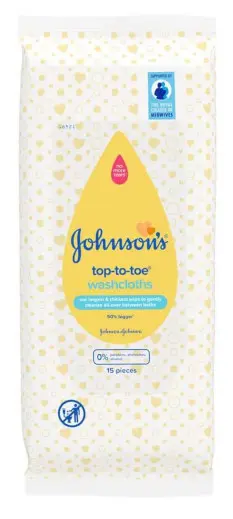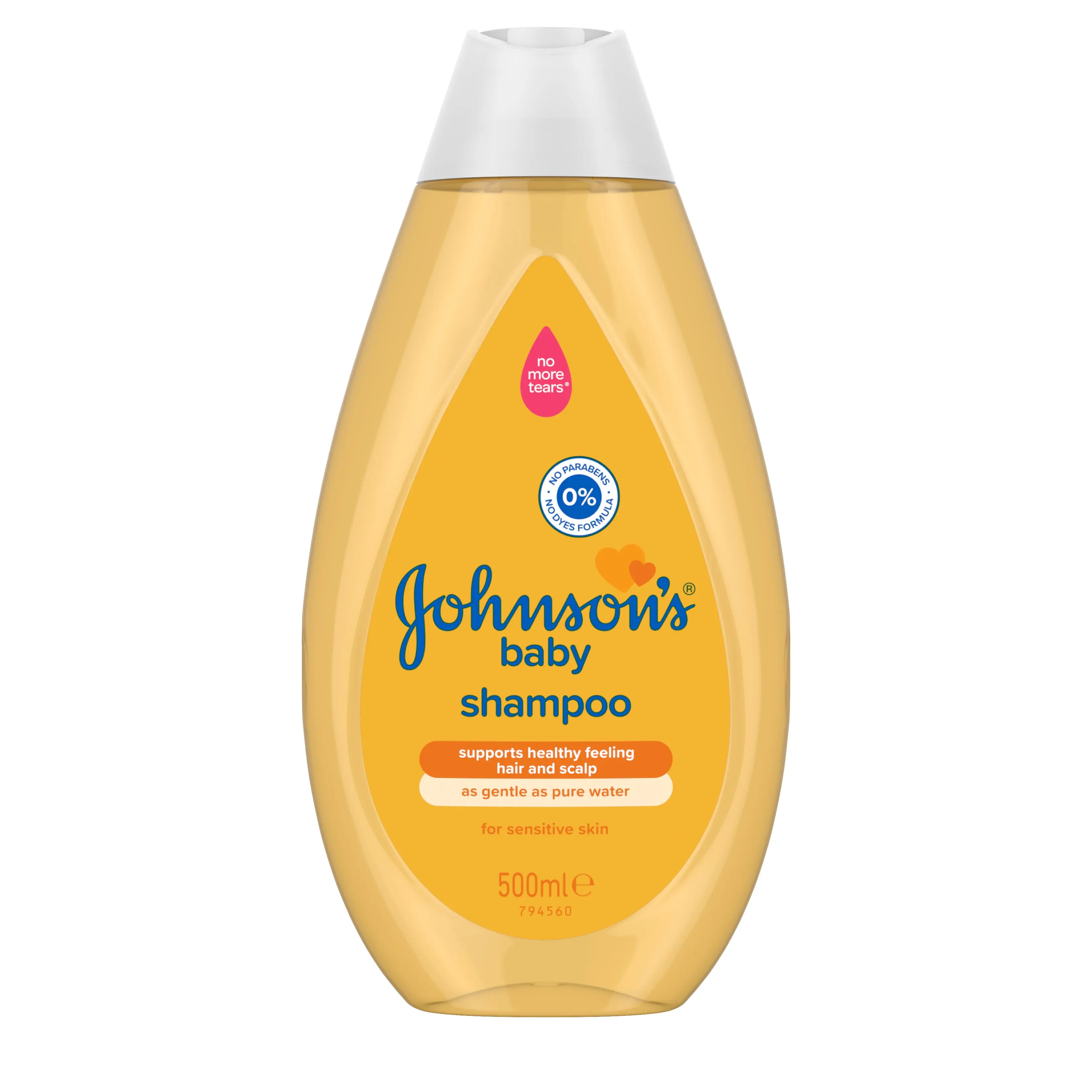How to Top & Tail Your Baby

How to top and tail your baby
While it’s important to practise good hygiene from birth, you don’t need to bathe your baby every day. On days where you’re not giving them a full bath, topping and tailing makes a great alternative to keep them squeaky clean.
Our handy guide to topping and tailing will explain the meaning of top and tail cleaning and offer step-by-step instructions on how to top and tail a baby, what you’ll need, as well as answers to some common questions you might have about keeping your little one clean. We’ll cover:
What does top and tail mean?
Topping and tailing is where you wash your baby’s face, neck, hands, and bottom using bowls of warm water rather than bathing them fully.
Why top and tail?
Keeping your baby's skin clean is essential to good health, and cleansing your baby is a wonderful bonding experience.
Topping and tailing your baby is a great way to build your confidence when it comes to keeping them clean. It can also be ideal if you’re feeling a little nervous about bathing them at first.
It’s a good way to clean your baby without having to put them in the bath. This is great if you don’t have a baby bath to hand or are short on time.
When to top and tail a newborn
You can top and tail your baby daily or every few days as and when it’s needed. Remember, all babies are different, so it’s a case of finding out what works best for you and your little one.
It’s best to choose a time of day when your baby is alert and happy to wash them. For this reason, it may be best to avoid washing them immediately after they have fed, or at times when they’re feeling tired or hungry.
What you will need to top and tail your baby
Ensuring you have all your essential items ready before your top and tail your baby is key to making sure everything goes smoothly. Here are our top tips on what you’ll need:
A soft towel with a hood to dry them off afterwards
A soft washcloth or fresh cotton pads
A gentle cleanser which has been specially formulated for babies, like JOHNSON'S® Top-to-Toe® Wash
Baby oil or moisturising lotion, like JOHNSON’S® Baby Lotion
A fresh nappy and clean set of clothes
A blanket
Soft bristled hairbrush or comb
Nappy cream
A floormat or changing mat which you can kneel on and will stop your baby rolling off
A place to put dirty clothes and nappies so you don’t have to mix them with your clean things
You’ll also need to:
Make sure the room is nice and warm when topping and tailing your baby. This is important because babies can become cold quickly.
Ensure the basin/baby bath is filled with water that is at a comfortable temperature. You can test it by putting your elbow in it — it shouldn’t feel colder or warmer than your elbow.
How to top and tail a baby
Before topping and tailing your little one, make sure the room is warm and you have everything you need prepared and ready to go.
First, put warm water into a basin or two bowls (one for the top and one for the ‘tail’), adding warmer water as needed. Try talking to your baby before washing them, as this could provide reassurance. Once they’re calm but alert, undress them (but leave the nappy on for now) and wrap them up in a towel to keep them warm.
Top
When you top and tail your baby, you’ll need to start at their head and work your way down their body. Here’s our step-by-step guide for getting started:
Eyes: Use one hand to securely hold your baby's head before cleaning around each eye gently with a warm, damp cotton pad – being careful to avoid the eye itself. Wipe outwards from the inside of the eye to make sure you’re not wiping any dirt or dust further into the eye.
Once you’ve cleaned one eye, get a fresh cotton pad for the second. If the eye looks clean and there’s no visible crust or dried mucus, you won’t need to clean the area.
Face: Use wet cotton pads or a soft washcloth to wipe your baby's face, focusing on the areas around their mouth and nose and cleaning from the middle outwards. Make sure you also wipe the areas under their chin, behind the ears, and any creases in their neck. Remember, never put ear buds or other cleaning implements inside your baby’s nose or ears. Once you’re done, pat the area dry gently.
Hair: With your baby wrapped warmly in their towel, place your arm under their back and hold them securely with your hand underneath their head. Using a washcloth, wet their hair with your free hand.
Once done, you can apply a little baby wash. Be sure to choose a gentle wash such as JOHNSON'S® Top-to-Toe® Wash. Massage this gently into their scalp. There is a soft spot (known as fontanels) on your baby‘s head, but it’s perfectly safe to touch and clean this area – just be gentle.
Next, rinse their hair with water – being careful to avoid their eyes – until you can see all the cleanser has been washed out. You can use a specially formulated baby shampoo like JOHNSON'S® Baby Shampoo. Lay your baby down and dry their head gently, covering them with the towel hood to keep them cosy and warm.
Tail
Leave your little one wrapped in the towel to help keep their head and upper body warm. Remove their nappy.
Next, clean their nappy area using warm, clean water and a gentle cleanser, or specially formulated baby wipes. Gently wipe from front to back for baby girls. You should also wipe front to back for baby boys, but carefully wash their penis and genital area too (making sure not to pull the foreskin back if they’re uncircumcised).
Top and tail aftercare
Once you’re finished cleaning you baby, you’ll need to follow a few additional steps to make sure they’re cosy and warm.
Pat their skin dry very carefully, including between the skin folds.
Next, apply a mild moisturising product to their skin before dressing. JOHNSON’S® Baby Lotion is hypoallergenic* and proven mild and effective for delicate baby skin. *Formulated to minimise the risk of allergies.
Apply a barrier or nappy cream to their bottom to reduce the risk of nappy rash.
Now, dress and wrap your baby in a blanket to keep them warm. Put on a clean nappy and fresh clothes or wrap them in a soft blanket.
Softly brush or comb you baby’s hair.
Holding them close to you, enjoy some bonding time with your baby through skin-to-skin contact. If your baby seems nervous, it may help to talk to them as you wash them, as the familiar sound of your voice can be soothing.
Tips to help you top and tail
Here are some top tips to help make sure topping and tailing your little one goes smoothly for you both:
Don’t forget to prep yourself
Before washing your baby, remember to remove any jewellery so it doesn’t catch their skin. You should also wash your hands before starting.
Be vocal and reassuring
Talking or singing to your baby as you clean them will help them relax. Try talking them through what you’re doing at each stage. The more you do so, the more they'll listen to and understand you.
Use a fresh piece of cotton wool for each eye
Make sure you use a fresh piece of cotton wool when washing each eye. This can help prevent the spread of any crusting, stickiness or infection.
Don’t use cotton buds in little ears
Avoid using cotton buds to clean your baby's inner ear, as they could damage them or push wax in further.
How to use a top and tail bowl
A top and tail bowl is a bowl that is divided into two sections – one for the top and one for the bottom. You’ll ideally need two bowls while topping and tailing your baby, so having a bowl that’s specifically designed for this purpose makes it easier to keep your baby clean between washes.
You Might Also Like...

JOHNSON’S® TOP-TO-TOE® Baby Washcloths - quick and easy bathtime anytime, anywhere.
Gently clean without needing to rinse with water. They are larger than a traditional baby wipe, and are made from a soft thick cloth. The NO MORE TEARS® formula is as mild to the eyes as pure water, which means the wipes are suitable to use even on baby's face.They provide a quick and easy bath anytime, anywhere.
JOHNSON'S®Pioneering Safety and Science in Baby Care
We are committed to working with Parents, Healthcare Professionals and Scientists to ensure our baby products continue to deliver high standards of safety and care.




